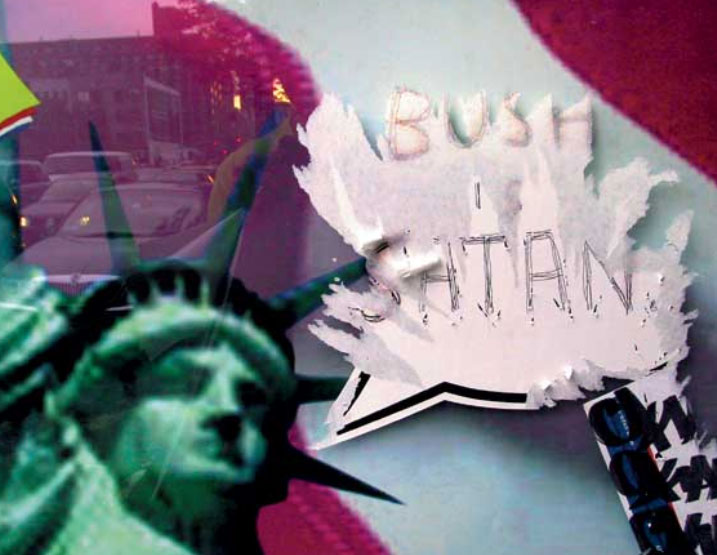RIP
Hyperexperience is moving!
After more than four years and five hundred posts, I wanted to let you know that I’ve moved on and decided to focus all of my attention on Sourcemap. It’s the world’s only platform for supply chain transparency, and I think you’ll find it fascinating. You can always follow my articles on the new Sourcemap blog – I hope to see you there!
-Leo
Capacitors from the Congo
Bill Hammack makes instructional videos about engineering in everyday life. In this episode he explains why the conflict mineral Tantalum is used to make cell phone capacitors smaller. Even though only 2% of the raw ore Coltan originates in the Congo, it is impossible to trace in its refined form, which means that the 40mg in your phone could play a role in the 5+ million murders in the region since 1994.
Hard Labor
Another amazing resource for anyone who wishes to know more and act with information when choosing products or choosing which issue to tackle – the US Department of Labor’s List of Goods Produced by Child labor or Forced (slave) Labor (publicly available in pdf format). The dry checklist gives only a cursory glance – it catalogs entire countries and industries while omitting Europe and the US – but it’s an important prototype for dispassionate analysis of some of the world’s worst problems in ways that can only improve over time. It’s definitely worth a look.
Via Tom Longley of Tactical Tech
Visualization for Advocacy
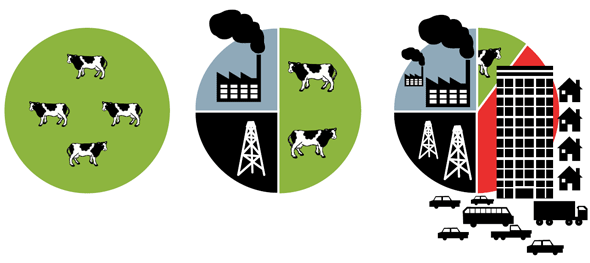
Nigel Holmes’ illustrations for the Citizens Guide to the Airwaves
Advocacy groups today need direct control over the way data is presented, often creating custom visualizations to communicate about systemic issues. Tom Longley of Tactical Tech introduced me to his group’s beautiful guide to information visualization for advocacy (available for download in pdf) – a must-read for anyone trying to rally many people around a complex cause. Here are a few of the great examples contained within:
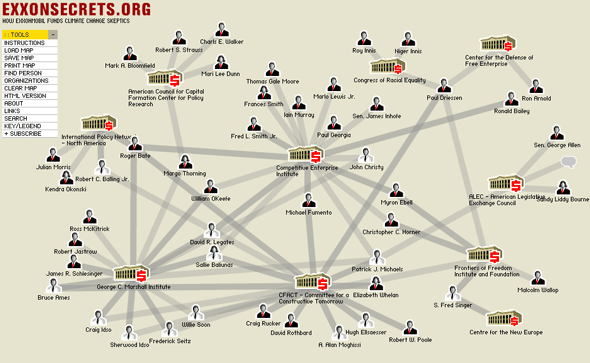
Greenpeace’s maps of corporate influence at Exxon Secrets
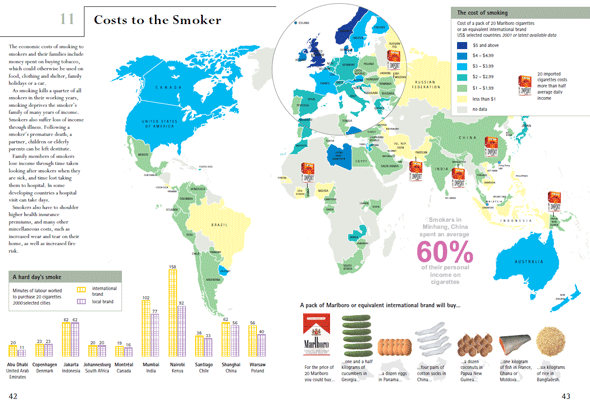
The World Health Organization’s Tobacco Atlas
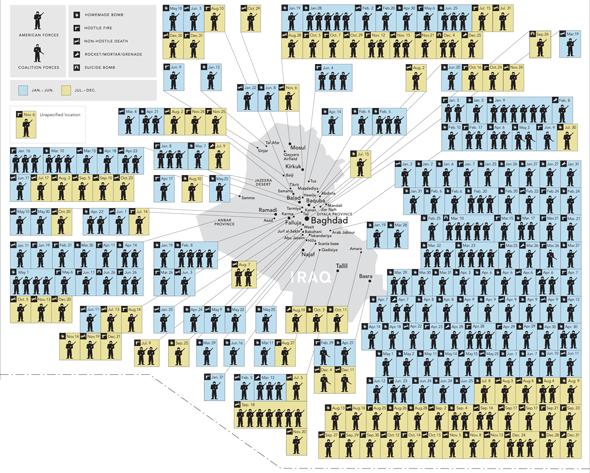
Adriana Lins de Albuquerque and Alicia Cheng’s A Year in Iraq and Afghanistan in the February 2007 New York Times
Radical Traceability

Small and independent producers can benefit from the Internet’s Long Tail and on-demand manufacturing to find supply and demand for their products. Now, they can also count on radical traceability in the form of Myfab.com, a website that combines user-contributed design with the ability to follow each step in the manufacturing process once a product has been ordered. What next, webcams in factories?

Via Chrysarora
Hijacking Ads
Last month at LUCID I had the honor of opening for Ji Lee, a Google employee who was discovered because of his brilliant guerilla advertisements or ‘hijackings’ as he calls them. He is responsible for The Bubble Project, a simple and thoroughly successful adbusting campaign where bubble stickers placed on posters invite crowd commentary. It blurs the line between advertising and art and merges a number of web trends with the physical world: user-generated content, customer reviews, the co-authorship of opensource and mashup media. Of course the speech bubbles have already been re-adopted by advertisers, so we’ll all have to stay one step ahead of them.
Evening Ware
As a frequent attendee of computational couture/fashionable technology/wearable computing events, I’ve grown suspicious that computers could become a seamless extension of Fashion. Until Thursday, when I was lucky enough to attend Diana Eng‘s runway show at Eyebeam Atelier. Her line explores many (by now) traditional techniques – electroluminescent wires, inflatables, computer-generated patterns, the ubiquitous LEDs – in uniquely elegant ways. In the crappy video I shot (above) you’ll see a stunning series of designs where the technical aspect is totally integrated with the cloth in the form of LED sequins, luminescent piping, a helium-filled hoop dress… What’s more surprising, the technology is graceful, pushing bodily expression toward a totally new and yet organic extension of feminine elegance.


